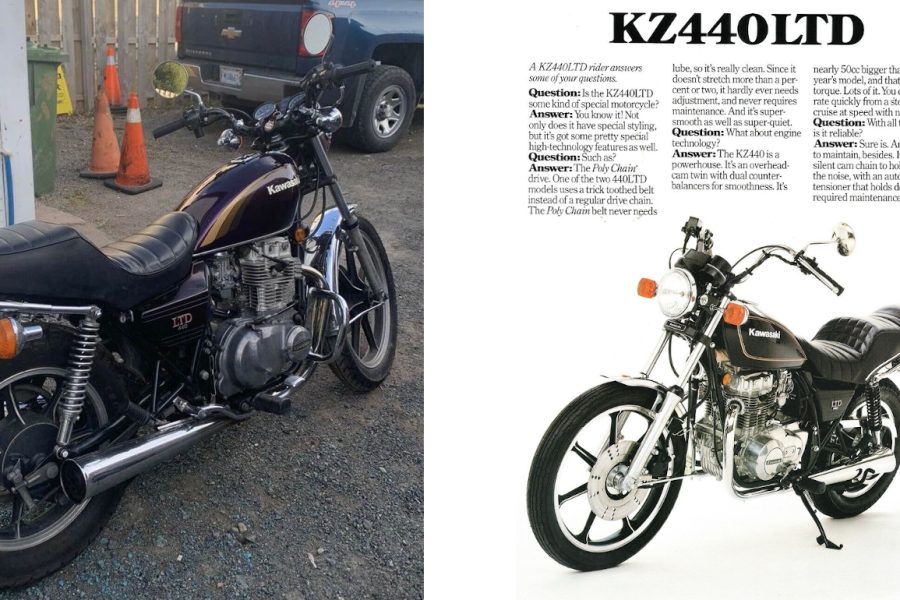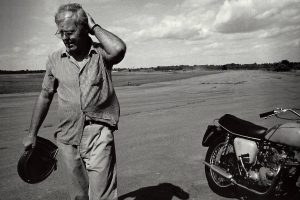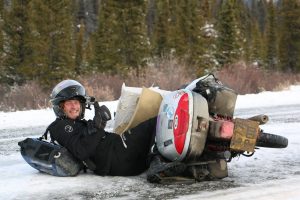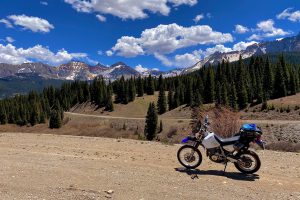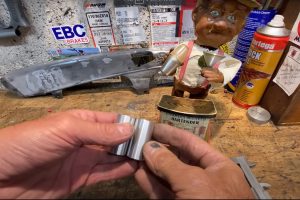Is there a motorcycle you’re afraid to ride? Everyone has their limit, even the great Kenny Roberts. After the 1975 Indianapolis Half Mile, King Kenny jumped off his deathtrap two-stroke Yamaha TZ750 flat-tracker, and famously said “They don’t pay me enough to ride that thing.”
There’s a bike that I’m afraid to ride, too, but not because of its power. I don’t think I ever want to ride a Kawasaki KZ440 LTD ever again, because it’ll ruin all the happy memories of my early 20s, when this bike was my ticket to freedom.

An original sales brochure for the Kawasaki KZ440 LTD. The over-the-top marketing is pretty funny in retrospect, but compared to the beginner bikes of the ’60s and ’70s, the 440 was far ahead of even the earlier Japanese equivalents.
A sensible runabout
Kawasaki introduced the KZ440 around 1979 as a replacement for the earlier KZ400 (in some markets, the bikes appear to have been sold concurrently for a while). The 400 and 440 were obviously closely related; they were both oversquare air-cooled four-stroke parallel twins, with 360-degree crank, SOHC top end, dual carburetors and a chain-driven counterbalancer. The 440 was rated for just over 40 horsepower at 7,000 rpm, and 26 pound-feet of torque at 7,000 rpm.
甚至在一天,这被认为是相当温和,but people bought a lot of these bikes, because they hit a sweet spot: They were “just enough.” You could ride the 440 on the highway if you needed to; it could top 80 mph if necessary, although you might not enjoy riding at that speed for long periods of time. The 440 had a reputation for decent fuel economy, and while the engines look fairly basic by today’s standards, they were certainly a major improvement on the Brit parallel twins that were still very prominent in riders’ memories. The KZ twin had electric start and a counterbalancer—maybe not as hairy-chested as a classic BSA or Triumph, but it was smoother and easier to start and generally live with. Just the sort of thing a commuter would want!
Just as the engine was basic and sensible, so was the rest of the 440. Kawasaki had a few variations on the 440, same as the 400 before it, but they generally had a disc brake up front and drum brake in rear, a heavy steel frame, and reasonably spacious passenger accommodations.
- Low mileage, for a bike that’s 40 years old. These machines can do double or triple this distance. Photo:Facebook
- This one, for sale in Canada, looks fairly clean. There’s a surprising amount of chrome on these machines, considering their place in the market.Photo: Facebook
- A relatively recent safety inspection sticker is always a welcome sight … Hopefully, it means less fix-up work after purchasing. Photo: Facebook
The LTD variant was a custom-styled take on the 440 formula, similar to Kawasaki’s larger LTD models (many of which were assembled in Kawasaki’s Nebraska plant). These bikes came with mag wheels, mini-ape handlebars and a stepped king-and-queen seat from the factory for that low rider look. It also came with a belt drive, which was pretty rare at that time (other 440 models had chain drive). If you really wanted to stand out from the crowd, you might add a large sissy bar; then, as now, the dealers loved to sell you add-ons. Anything to make you feel like you were a real bad-ass on a cruiser, a realman’sbike!
Of course, owning an LTD440 didn’t make you a bad-ass; to those in the know, it didn’t even make youlook like a bad-ass. But while you couldn’t join all those guys out on their Shovelheads, riding to Sturgis for a week of hedonism, at least you couldfeellike you were part of the club while you rode your KZ440 to work Monday to Friday, 8-5.
A great learner bike
The 440 LTD was aimed at commuters, but it was also well-suited to learners. It had just enough power to ride safely on the highway, and not enough power to get you into serious trouble. The bike’s low-centered weight was easy to manage, and so was the price tag.
- The 440 came in other flavors; some Euro markets even had a touring version with large fairing and hard saddlebags.
- This cafe-style 440 variant looked pretty decent. The standard version was arguably even better-looking.
These days, the 440 LTD suits another kind of learner: The DIY bike builder who needs to build their skills on a cheap machine. Long-gone are the days when you could buy a cheap CB750 or even a CB550, if you wanted to cobble together a homebrew cafe racer. Same goes for the XS650, the GL/CX series and almost every other reliable Japanese bike from the 1970s or 1980s. However, the KZ440 is still usually affordable when you find one for sale, and as they tend to be pretty much indestructible, you can still get years of use out of them. If the engine’s internal chain drives (counterbalancer and primary drive) decide to blow up, then you can always find another cheap engine in a backyard or a junkyard somewhere and swap it over. Kawasaki sold an awful lot of these bikes, and many of them are still laying around the countryside somewhere.
(Seehere,hereandherefor some cool examples of KZ440 scrambler customs).
Around 20 years ago, we had a 1981 KZ440 LTD go through my family that hit all three stages of ownership: Commuter, learner and customization platform. When I was in university, my dad bought a 1981 KZ440 LTD with a little more than 50,000 km on the odometer; the previous owner had used it to go back-and-forth to their job at the post office, rain or shine, for decades (and it showed—there was a lot of rust). But the bike ran pretty well after a carb cleaning, and my dad traded it on to me eventually, just as I earned my full moto license.

My ’81 440, somewhere in New Brunswick on a mid-winter interprovincial road trip in the early ’00s. Note that classy aftermarket luggage (gym bag, strapped down to the cheesy rear rack). A university student’s budget only stretches so far. Photo: Zac Kurylyk
从那里,我骑在大西洋加拿大machine, doing some riding through weather conditions that frankly, I’ve no desire to repeat. I added a set of KLR handlebars and that 440 took me across provinces in the summer heat and winter cold, because it was the only vehicle I had. But eventually, I’d decided to move on, and passed it on to my cousin. I’d already done a custom two-tone paint job, and added enduro handlebars and fork boots; my cousin bolted on a massive front end that turned it into the world’s longest motorcycle (a record that, alas, he did not register with Guinness, and has since been eclipsed).
So, while the 440 LTD is a bit underpowered and uncool, I have fond memories of mine, and every time I see one that’s relatively affordable. I get tempted to buy another. But, even if the price is cheap, my memories of the fun I had on mine are priceless, and I don’t need to ruin those by jumping aboard the bike and realizing it’s an ill-handling dorkmobile.
If you have no such compunctions,this one’s for sale for $2,000 in Nova Scotia, not far from the Bar Harbour-Yarmouth ferry terminal, and itdoeslook super clean … and super-purple. No judgment, if that’s your thing.


